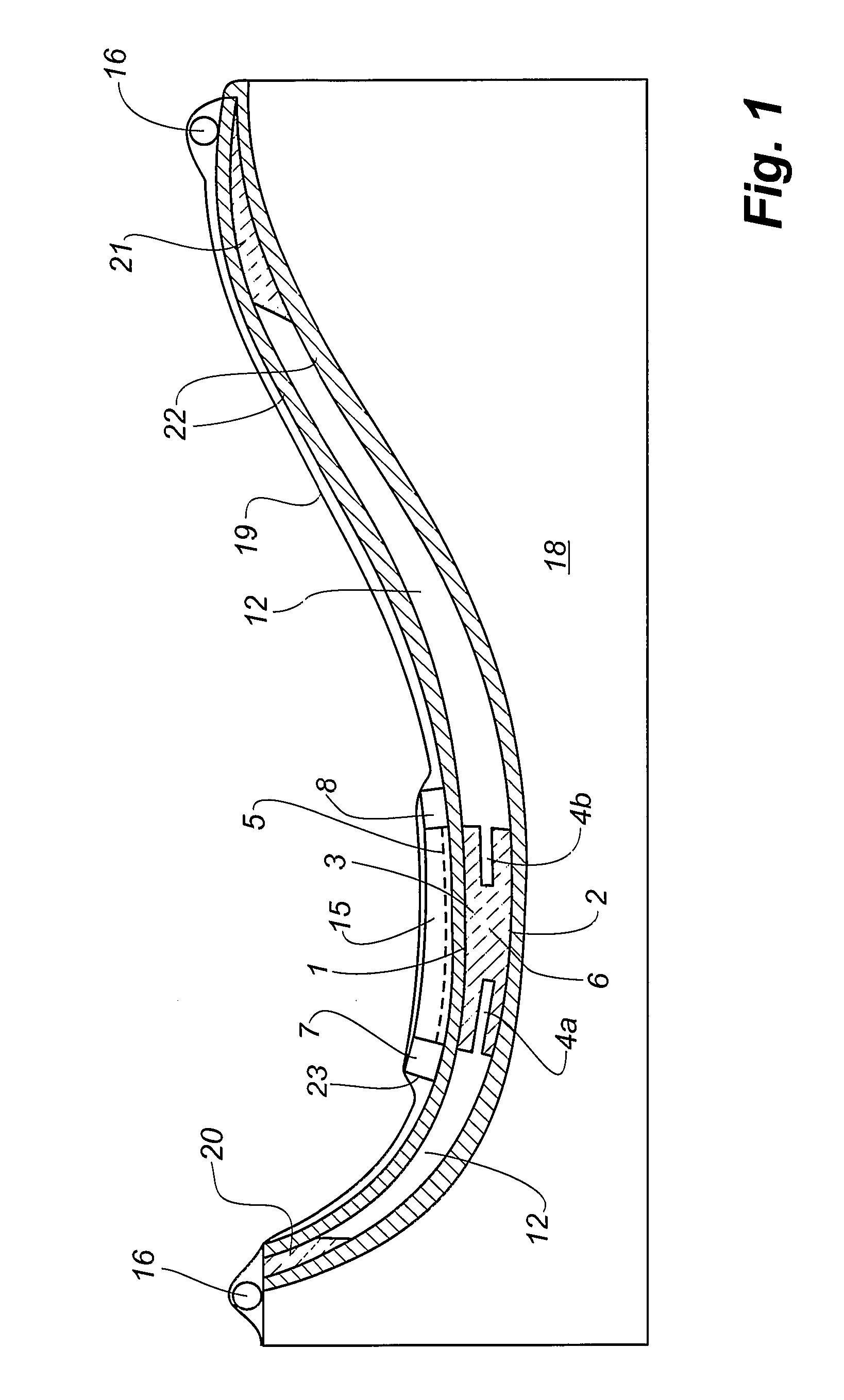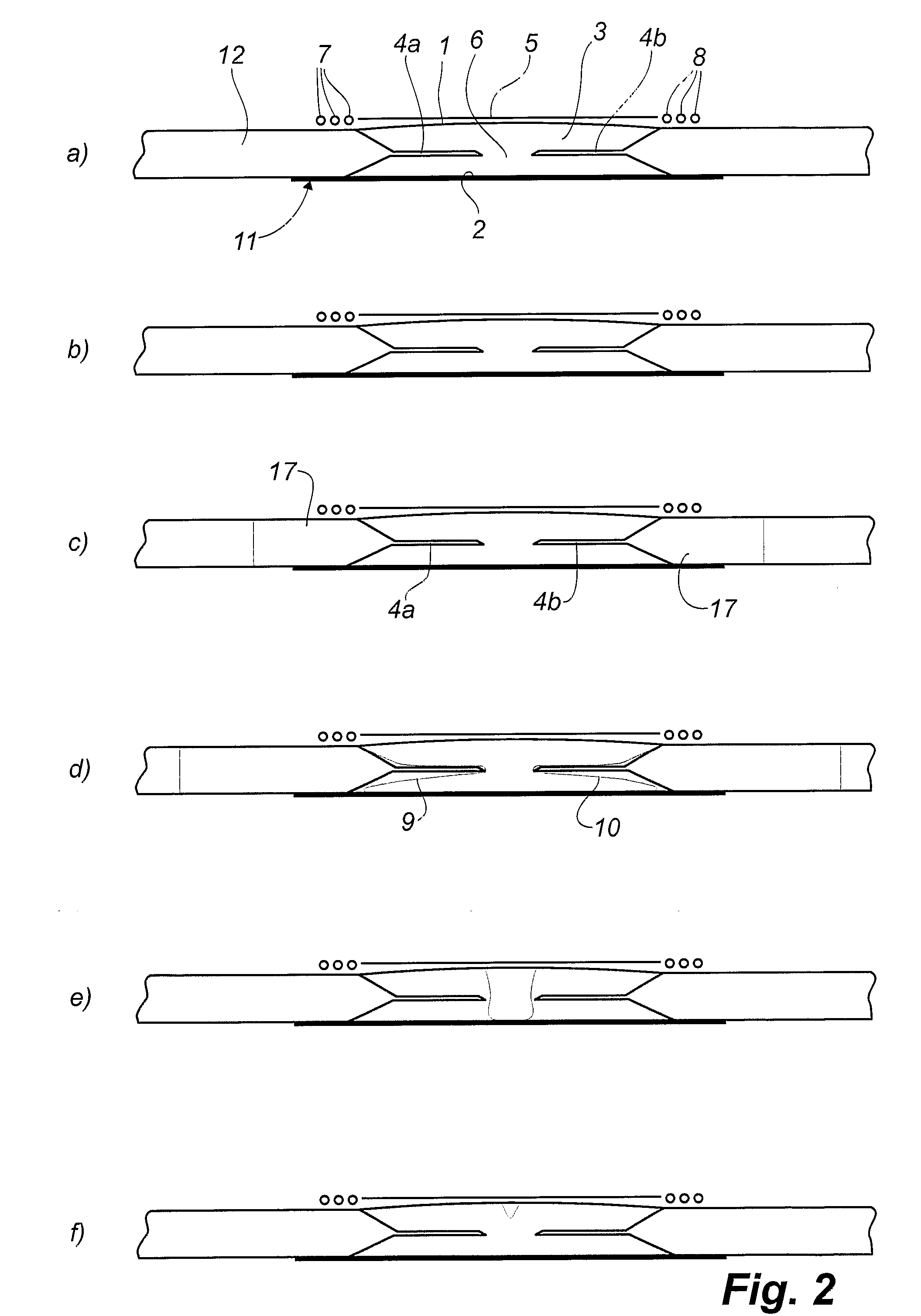Vacuum Infusion by Means of a Semi-Permeable Membrane
a semi-permeable membrane and vacuum technology, applied in the field of vacuum infusion by means of a semi-permeable membrane, can solve the disadvantage of placing the outermost layer, achieve the effect of reducing the time for preparing the filling process, reducing the time for forming the mold, and ensuring the quality of the liquid polymer
- Summary
- Abstract
- Description
- Claims
- Application Information
AI Technical Summary
Benefits of technology
Problems solved by technology
Method used
Image
Examples
Embodiment Construction
[0025] The cross section at view of FIG. 1 through a mould for manufacturing a blade shell half for a blade of a wind turbine by vacuum infusion shows a solid mould part 18 with a top side matching the exterior side of the completed blade shell half. First, a so-called gel coat is placed on the inner side of the mould part 18, said gel coat later on forming the outside of the completed blade shell half. Fibre material 3, 22 and balsa 12 are placed on top of the gel coat. The fibre Insertion 3 forming the main laminate of the blade is placed at the lowest part of the mould and includes a first lateral face 1 facing upwards, and a second lateral face 2 facing downwards. On top of the first lateral face 1 of the main laminate, a membrane bag 23 is placed, which is shown in greater detail in FIG. 3, and which includes a vacuum channel 15 with a semi-permeable membrane 5 pointing towards the main laminate 3, and two inlet channels 7, 8. Vacuum channels in the form of perforated tubes 16 ...
PUM
| Property | Measurement | Unit |
|---|---|---|
| Length | aaaaa | aaaaa |
| Length | aaaaa | aaaaa |
| Length | aaaaa | aaaaa |
Abstract
Description
Claims
Application Information
 Login to View More
Login to View More - R&D
- Intellectual Property
- Life Sciences
- Materials
- Tech Scout
- Unparalleled Data Quality
- Higher Quality Content
- 60% Fewer Hallucinations
Browse by: Latest US Patents, China's latest patents, Technical Efficacy Thesaurus, Application Domain, Technology Topic, Popular Technical Reports.
© 2025 PatSnap. All rights reserved.Legal|Privacy policy|Modern Slavery Act Transparency Statement|Sitemap|About US| Contact US: help@patsnap.com



